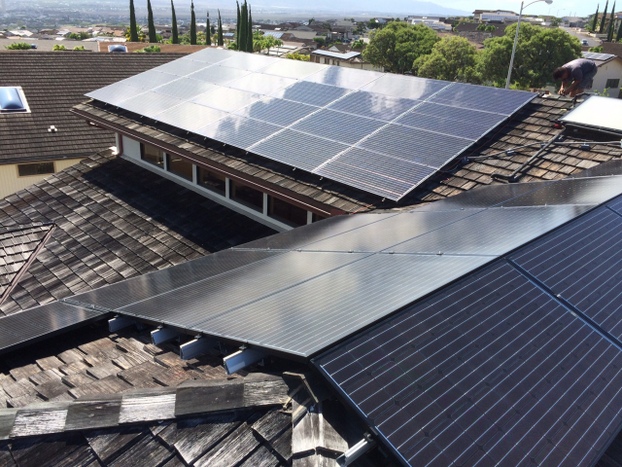Have you bought your battery inverter yet?
Grid-tie inverters like Enphase perform "active anti-islanding". Besides pushing a sine wave of current into the grid voltage they detect (current proportional to voltage, like a resistive load except opposite polarity), they test for presence of grid by pushing some current out of phase, at the wrong time. If they detect a bottomless pit that will accept any current without voltage change, they know they're on the grid. If they feel the presence of loads which react to that current, they recognize an "island", perhaps just your house and the neighbor's, so they cut out.
Systems built around the Sunny Island battery inverter/charger (my picture) work with grid-tie inverters and stuff the excess power into their battery. The grid-tie inverters are supposed to be told to stop that anti-islanding stuff when off-grid.
I've run mine with some grid-tie inverters that aren't converted for off-grid or backup operation. So long as batteries need charge, the grid tie inverter produces all it can and Sunny Island charges its batteries. Once batteries get full, Sunny Island alters frequency, raising it above 60 Hz. This knocks the grid-tie inverters offline, where they stay for 5 minutes before trying again. (Other grid-tie inverters with off-grid settings smoothly reduce output in response to frequency.)
If you bought one of these 120V 6kW Sunny Island (about $2000 or so new on the surplus market), added a 120/240 transformer (or bought two inverters for 10 kW 120/240V), that could work for you. Change a setting so it doesn't go below 59.5 Hz, to better support your Enphase inverters. But, this system will cycle your Enphase inverters all on/all off and cycle the batteries to match your loads.
Instead of using the Enphase, I think you're better off connecting the PV panels to a charge controller and putting DC in your battery, or connecting them to a hybrid inverter. If you get Sunny Island, you can use DC charge controller or a "Sunny Boy" grid-tie inverter with settings for off-grid.
It looks like the hybrid inverters are an economical all-in-one solution. Sunny Island is built like a tank, can be extended to power a village, and is usually expensive. It supports a limited set of Lithiu BMS, or lead-acid. The surplus deals out there make it worth looking at for systems in the 6 kW to 24 kW range.
tictag: Yes it will impact motor speed, vinyl record turntable pitch, and clocks. It takes care of clocks by balancing > 60 Hz with < 60 Hz over time. By the way, PG&E no longer guarantees 60 Hz. Guess they figure people now use either wind-up clocks or quartz crystal clocks, not AC motor clocks.



